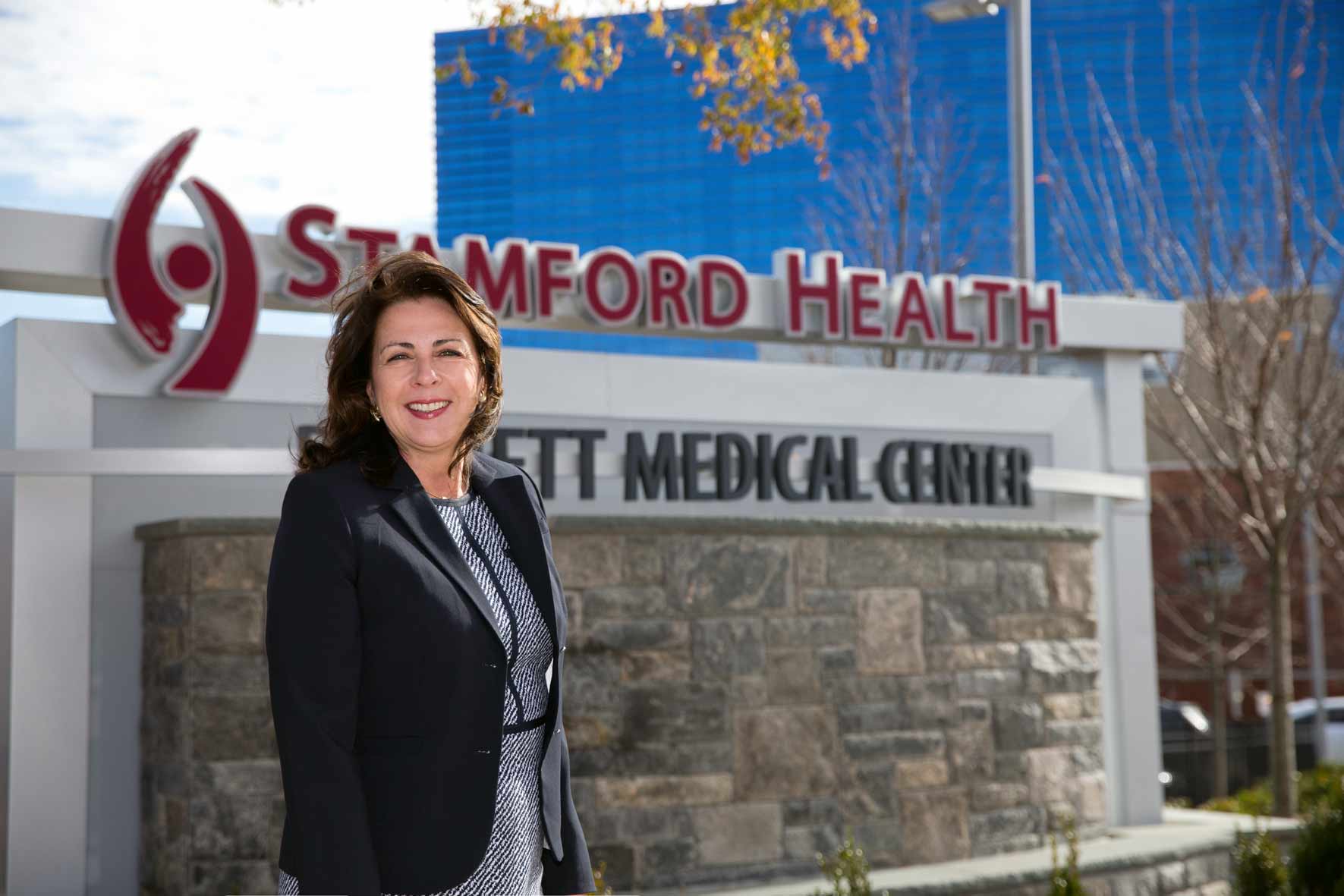
In just eight months as Stamford Health CEO, Kathleen Silard has overseen a seemingly head-spinning number of achievements.
Those have ranged from the facility becoming the first hospital in Connecticut to receive a certification from Leadership in Energy and Environmental Design (LEED) ”” the world”™s most widely used green building rating system ”” and to offer SpineJack, an FDA-approved procedure for patients suffering from vertebral compression fractures, to the official launch of its Heartburn, Reflux & Esophageal Specialty Center and, last month, the naming of Jonathan Bailey as chief operating officer, the position Silard held before ascending to CEO.
“We”™re working very hard,” she said with a laugh.
Part of that work revolves around continuing to expand its collaboration with New York City”™s Hospital for Special Surgery, through HSS Orthopedics at Stamford Health, a center for advanced orthopedic care serving Connecticut and New England.
“We actually met with them again just the other day,” Silard said, “to discuss bringing in new physicians here as we continue to build a best-of-class orthopedic practice.”
Through such initiatives as the Heartburn Center and its Stroke Center, Stamford Health has upped the ante when it comes to on-site care, Silard added. The latter, which since November has been headed by Chief of Neurointerventional Service Todd Miller, has increased its service to include thrombotic surgery, so that patients suffering that type of stroke ”” wherein a blood clot usually forms around atherosclerotic plaques ”” can have surgery to remove the clot on campus.
The organization is also increasing its ambulatory care services. In January nine physicians joined the Stamford Health Medical Group, a physician-led, multispecialty medical group with 40 offices in lower Fairfield County.
“No one goes to the hospital unless they have to,” Silard said, “and bringing care to the customers we serve has become more and more important.” Stamford is also pushing apps to its patients to allow them easier access to scheduling appointments, reviewing their records and other functions, she added.
Silard allowed that the state”™s health care landscape remains something of a minefield.
While she said the organization applauds the efforts made by Gov. Ned Lamont and the Legislature to roll back the long-reviled hospital tax ”” a tentative agreement between the state and the Connecticut Hospital Association was announced on May 28 ”” Silard noted that not-for-profit hospitals like Stamford are still collectively on the hook for $1 billion under terms of the new biennial budget.
She also expressed frustration over the slow progress being made in addressing what she called “the chronic underpaying of Medicaid.” The new budget increases the HUSKY A Medicaid program for working poor adults with children, by raising income eligibility limits from 155% of the federal poverty level to 160%.
The move allows roughly 4,000 more residents to receive health care ”” a move in the right direction, Silard said, but a relative drop in the ocean when it comes to the state”™s uninsured. According to the United Health Foundation, about 5.2%, or nearly 186,000, of Connecticut residents were uninsured in 2018.
A piece of legislation that did not pass this year, the so-called “Connecticut Option,” which would have established a statewide individual mandate similar to what was once charged in the Affordable Care Act, offered through insurance companies under their own provider networks or through a network developed by the state comptroller”™s office, might be worth revisiting, Silard said.
She said the Medicare for All Act of 2019, supported by U.S. Sen. Richard Blumenthal, which would establish a health-insurance system financed solely by the federal government, was not the answer.
“Hospitals would go bankrupt under a single-payer plan,” Silard said. “What we need to do is build on the success of the Affordable Care Act.”
When talk turned to the mergers taking place in the hospital industry, such as the union between Western Connecticut Health Network and Health Quest Systems, to be called Nuvance Health, as well as Hartford HealthCare”™s acquisition of St. Vincent”™s Medical Center in Bridgeport, and the unification of Bridgeport Hospital and Milford Hospital, approved on June 7 by the state Office of Health Strategy, Silard said Stamford Health was determined to remain independent.
“We are driven by a desire to operate in the best interests of our community, which means not taking directions from a big office located somewhere else,” she declared.
A report issued last year by management consultancy firm Navigant, as well as other studies, that found mergers and acquisitions do not necessarily result in reduced costs and better service have proven that “Bigger is not always better,” Silard added.






















